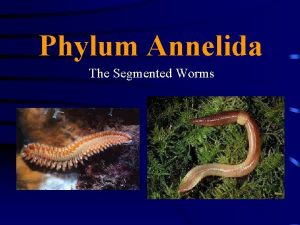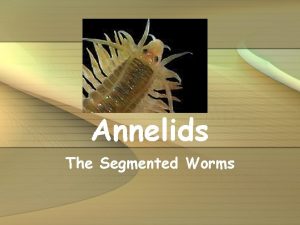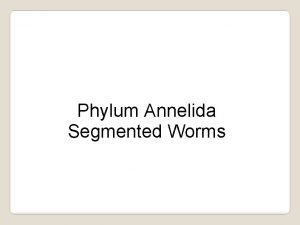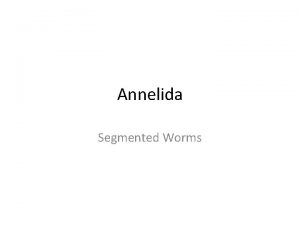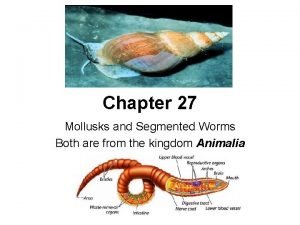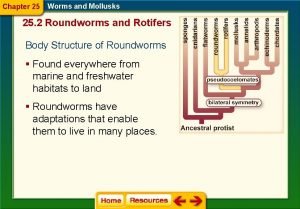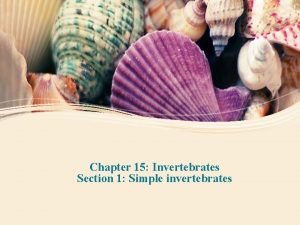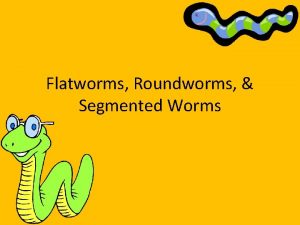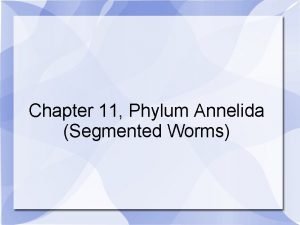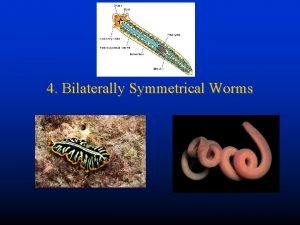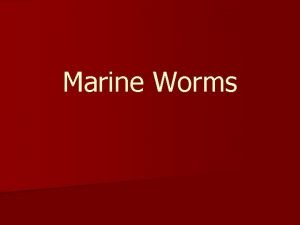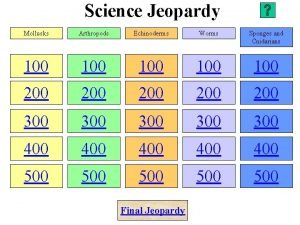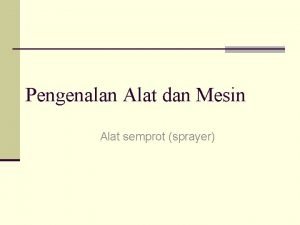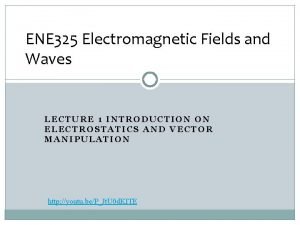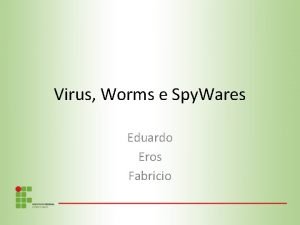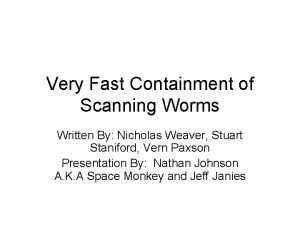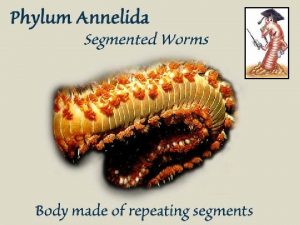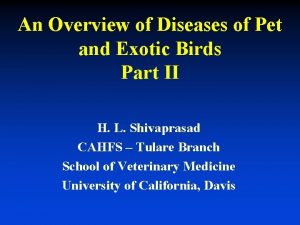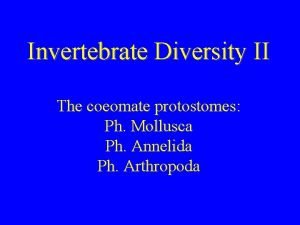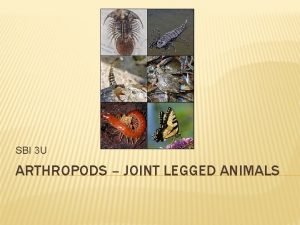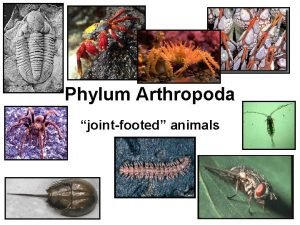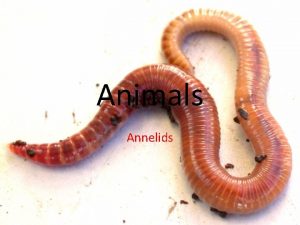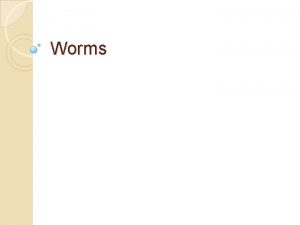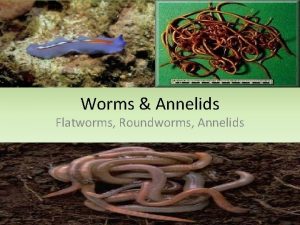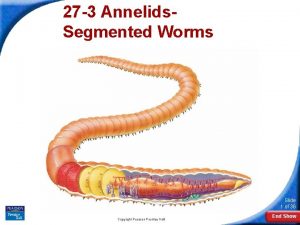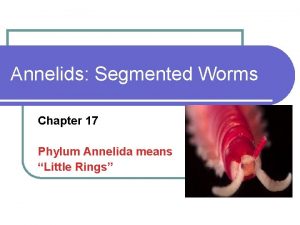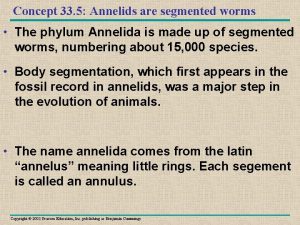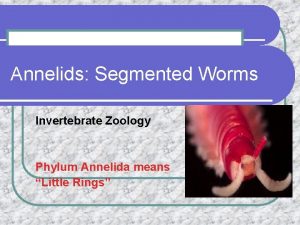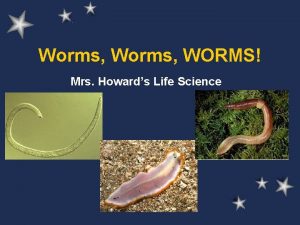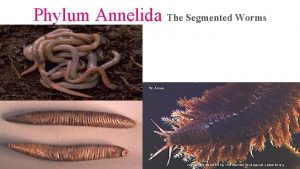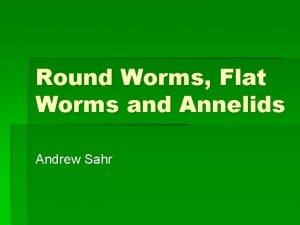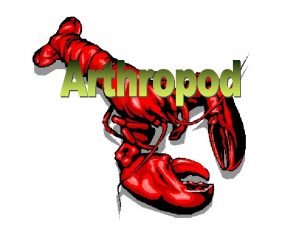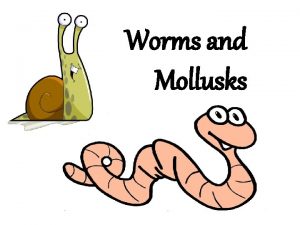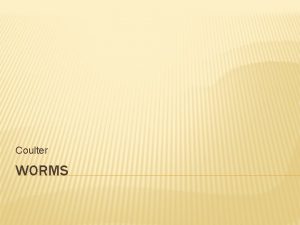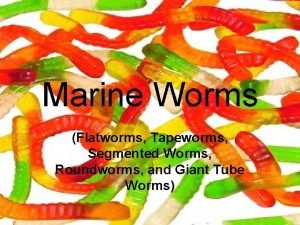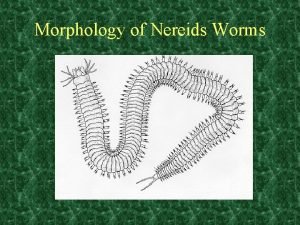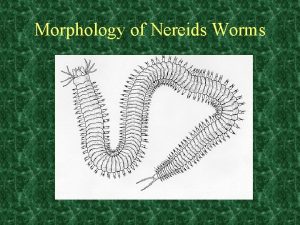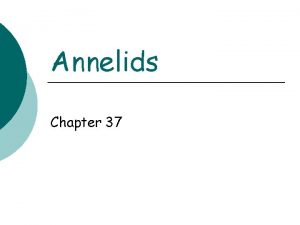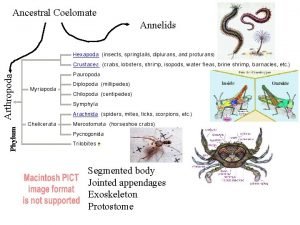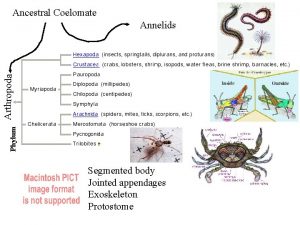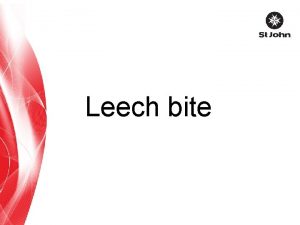Annelids The Segmented Worms Characteristics Includes duster worms
























- Slides: 24

Annelids The Segmented Worms

Characteristics • Includes duster worms, earthworms, & leeches • Abundant in all habitats • Have a true coelom fully lined with mesoderm • Body divided into external segments called metameres (metamerism)

Oligochaetes

Characteristics • Metameres correspond to internal segments • Have a one-way digestive system with a mouth & anus • Well developed brain & sensory organs • Fluid-filled coelom provides hydrostatic skeleton

Hydrostatic Skeleton

Characteristics • Most have external bristles or setae that aid movement • Setae may be modified into flashy appendages called parapodia

Parapodia

Classification • Includes 3 classes based on number of setae & presence or absence of parapodia • Classes of segmented worms -- • Oligochaeta • Polychaeta • Hirudenia

Oligochaeta EARTHWORMS

Characteristics • • Have no parapodia Few setae for movement Includes earthworms Bodies may have over 100 metameres • Internal partitions called septa • Distinct anterior & posterior ends • Bilateral symmetry

Characteristics • Cephalization (head with sense organs) shows specialization for burrowing • Have both circular & longitudinal muscles for movement • Have external, saddle-shaped structure called clitellum that forms a cocoon containing eggs & sperm

Digestive System • Has both a mouth and anus • Prostomium or lip digs through soil as earthworm feeds on organic matter (detritus) • Pharynx is a muscular organ behind the mouth to help suck in food • Food temporarily stored in crop, ground in gizzard, and digested & absorbed in intestine • Wastes called castings pass out through anus

Digestive System

Circulatory System • Closed circulatory system with 5 pairs of aortic arches or hearts • Dorsal blood vessel carries blood posteriorly to cells & ventral blood vessel returns blood anteriorly

Other Systems in Earthworms • Secrete mucus to keep skin moist so oxygen will dissolve & diffuse into body • Long tubules called nephridia filter wastes from blood & excrete it through pores • Simple brain, no eyes, & dorsal and ventral nerve cords • Sensitive to light, touch, moisture, chemicals, temperature, & vibrations • Hermaphrodites exchange sperm & crossfertilize • Sperm sacs store the worm's own sperm & seminal receptacles store exchanged sperm

Earthworms Reproducing

Hirudenia LEECHES

Characteristics of Leeches • No setae or parapodia • Includes leeches • Have anterior & posterior suckers for attachment • Some suck blood from hosts, while others are scavengers or predators

Characteristics of Leeches • Mouth's of blood-sucking leeches with chitinous teeth & secrete anticoagulant • Found in freshwater • Flattened dorso-ventrally • Hermaphrodites that crossfertilize

Medicinal Leeches

Polychaeta SANDWORMS & CLAMWORMS

Polychaete Characteristics • • • Marine Includes sandworms & clamworms Have paddle-like parapodia to move Take in oxygen through parapodia Some are free-swimming predators with strong jaws to feed on small animals • Many live commensally with sponges, mollusks, & echinoderms • Well-developed head with antenna & specialized mouthparts

Clamworms

 Characteristics of segmented worms
Characteristics of segmented worms Segmented worm characteristics
Segmented worm characteristics Characteristics of segmented worms
Characteristics of segmented worms Spoon worm anatomy
Spoon worm anatomy Are worms mollusks
Are worms mollusks Chapter 25 section 4 segmented worms
Chapter 25 section 4 segmented worms What are some invertebrates
What are some invertebrates Platyhelminthes vs nematoda
Platyhelminthes vs nematoda The characteristics of annelids
The characteristics of annelids Bilateral symmetry worms
Bilateral symmetry worms Bilateral symmetry worm
Bilateral symmetry worm 5 advanced characteristics shared by cephalopods
5 advanced characteristics shared by cephalopods Section 27-3 annelids
Section 27-3 annelids Glasgow thang điểm
Glasgow thang điểm Feather duster paint technique
Feather duster paint technique Cara kerja mist blower sprayer
Cara kerja mist blower sprayer Si unit of permittivity of free space
Si unit of permittivity of free space Weaver duster worm
Weaver duster worm Weaver duster worm
Weaver duster worm What is a true coelom
What is a true coelom Budgie feather duster syndrome
Budgie feather duster syndrome Mollusca protostome or deuterostome
Mollusca protostome or deuterostome Arthropods are jointed-legged animals. spiders crabs
Arthropods are jointed-legged animals. spiders crabs Subphylum
Subphylum Celicerata
Celicerata
